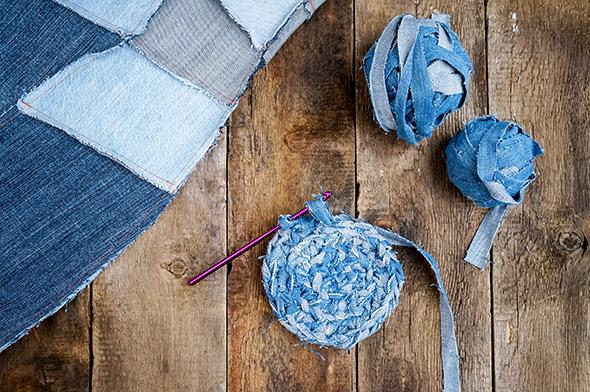When you’re starting out in fashion design it’s essential that you invest in some core materials which you will have for decades to come. While this can be expensive, there are some tips and tricks you can use to substitute certain items for more affordable ones if your budget is small and your inspiration can’t wait. We've listed some of our favourites below to help get you started.

1. Use and reuse fabrics for toiling
If you are using a lot of fabric in your design, the cost of toiling can add up.
- If you are using calico, you can deconstruct the toile at a later date and re-use the calico for other projects.
- If calico is not an option, spare bed sheets work just as well. They are usually made of cotton and are a very good width, especially a double bedsheet.
- Voile curtains are a great alternative if you need to toile a fabric like organza.
- Light gauze curtains are good for toiling chiffons.
2. Use and reuse haberdashery for toiling
It's a really good idea to build up a toiling archive which is a workbox of haberdashery that you can use anytime you need to mock-up a garment.
- Before you throw out an old coat or dress remove the buttons, zips or closures. All of these can usually be reused.
- Do the same for elastic cuffs and waistbands. They can be hard to get in fabric stores and are worth holding on to.
3. Source haberdashery from old and new
Sometimes it can be cheaper to buy a garment with the item you need already sewn on to it, rather than buying it in a packet from a fabric shop. For example:
- Many charity shops will sell garments that have beautiful buttons on them or a very ornate trim.
- Big budget retailers often sell accessories and garments so cheaply that it is more cost effective to buy the item and remove what you need.
4. Bulk buy where you can
- Ask your local fabric shop if they offer discounts on full rolls of fabric. In most cases, you will get a significant discount as you would be buying the roll at a wholesale price.
- Team up with classmates for basic supplies. If a few people will be using interfacing, why not invest in a full roll and then divide up the roll? You can make major savings by group buying.
5. Use household alternatives for sampling
If you are sampling many ideas for a project, you may need to buy materials that you won’t end up using. Before you invest in these, consider using some of these household items as alternatives when you’re creating samples:
- To create samples of extra chunky knit wear, use the cardboard rolls from empty rolls of tinfoil or clingfilm instead of buying chunky knitting needles; cardboard poster tubes can work really well too.
- A brand new pizza cutter can be used to create samples of fabrics like silk or leather; it won't have the same sharpness as a rotary cutter but it is a good alternative before you decide to invest in one.
- To print images onto fabric, buy a big tub of Acrylic Gel Medium from an art supply store. This works the same as an expensive small tube of transfer gel but will last a lot longer.
6. Collect everyday decorative pieces for your sketchbook
Like your toiling archive, it’s a good idea to build a sketchbook archive.
- Keep interesting wrapping paper from a gift, a decorative ribbon from a box of chocolates or an unusual wrapper.
These items are all useful for adding interesting backdrops to your sketchbook, to help convey a mood and to liven up a page with a burst of color or pattern.
7. Create your own on-the-go lightbox
Lightboxes are wonderful for tracing croquis and fashion silhouettes from books and magazines. When you’re on the move and don't have access to a lightbox, try using these alternatives:
- The backlight on a laptop screen works really well.
- A sunny window works well too. Anywhere there is light passing through will help you trace your image.
8. Search the discount stores
Never underestimate what can be sourced in the discount store.
- Colored paper, glue guns, mechanical pencils and Sharpies are just some of the items that are regularly stocked at rock bottom prices.
The quality is just as good which makes these stores really useful when you need materials quickly and on a budget.
Let your tailoring shine, not the materials
Some students feel embarrassed if their finished garment is made from cheap fabrics. I believe that a well fitted, beautifully tailored garment is the measure of an excellent maker and designer, regardless of the fabric used.
It’s worth remembering that when John Galliano first graduated, he had so little money that he had to make his designs out of lining. But his “slip dresses” were so well cut that they became an instant success and were worn by Princess Diana and many other celebrities.
If a client loves your work and commissions you to make something, you can then select more expensive fabrics and items based on their budget.
Are there any substitutions that have worked for you? We’d love to hear your tips.
